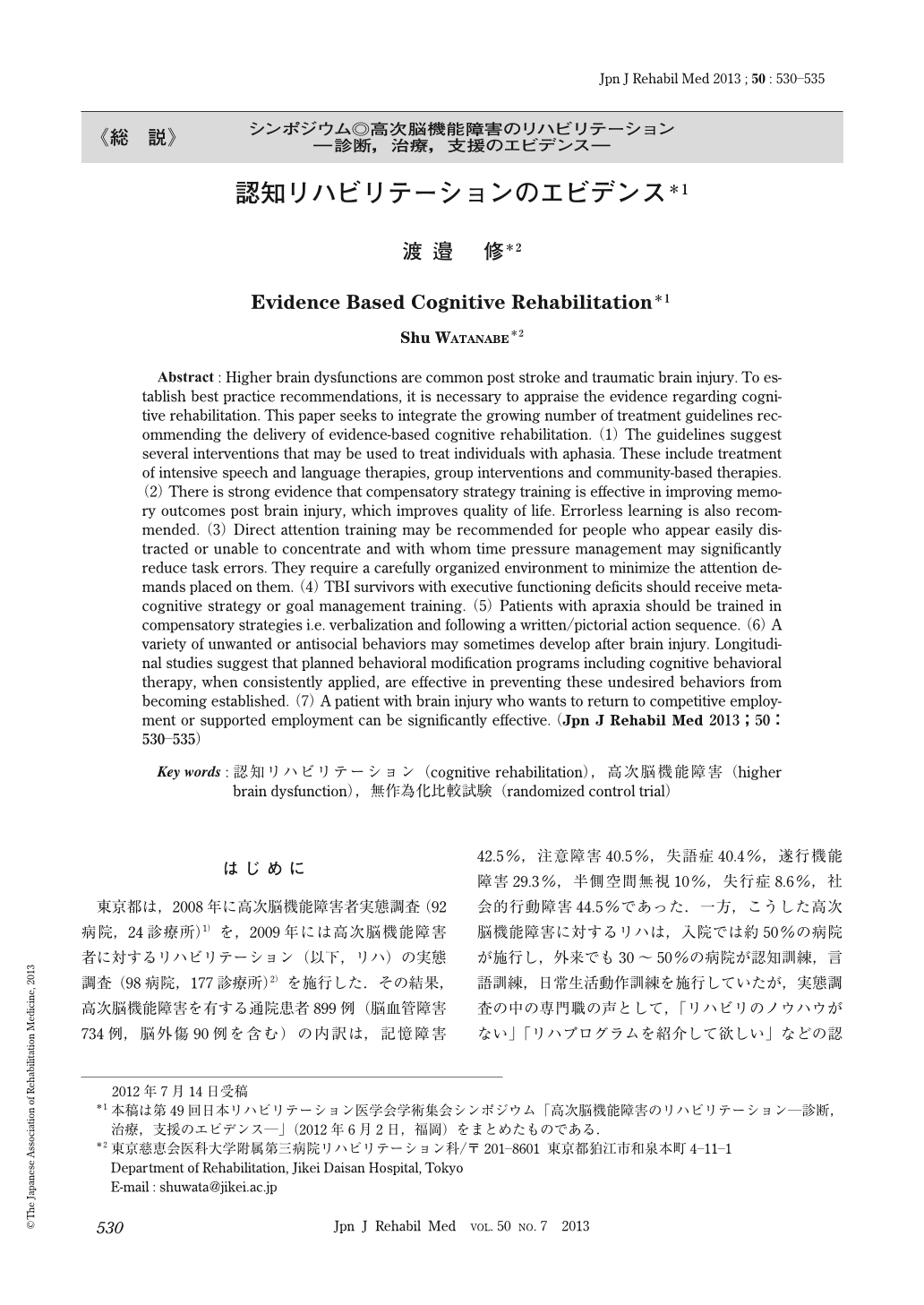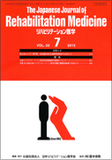Japanese
English
- 販売していません
- Abstract 文献概要
- 1ページ目 Look Inside
- 参考文献 Reference
はじめに
東京都は,2008年に高次脳機能障害者実態調査(92病院,24診療所)1)を,2009年には高次脳機能障害者に対するリハビリテーション(以下,リハ)の実態調査(98病院,177診療所)2)を施行した.その結果,高次脳機能障害を有する通院患者899例(脳血管障害734例,脳外傷90例を含む)の内訳は,記憶障害42.5%,注意障害40.5%,失語症40.4%,遂行機能障害29.3%,半側空間無視10%,失行症8.6%,社会的行動障害44.5%であった.一方,こうした高次脳機能障害に対するリハは,入院では約50%の病院が施行し,外来でも30~50%の病院が認知訓練,言語訓練,日常生活動作訓練を施行していたが,実態調査の中の専門職の声として,「リハビリのノウハウがない」「リハプログラムを紹介して欲しい」などの認知リハの質を問う疑問が聞かれた.
各種の認知リハの効果を無作為化比較試験(randomized control trial:RCT)で示すことはなかなか難しい.損傷部位が不均一であること,さまざまな背景要因が症例ごとに異なること,そして倫理性に配慮しなければならないからである.したがって認知リハの効果に関し,エビデンスの高い研究は少ないが,この制約のなかで,欧米を中心として発表されている認知リハに関するガイドラインを,筆者の経験とともに簡略にまとめる.
なお,本文で引用する研究論文のエビデンスレベルおよびリハ内容の勧告グレードは,本邦で2009年に発表された脳卒中治療ガイドライン20093)に準拠した(表).また,研究報告されている基礎疾患は脳卒中および脳外傷が主であることから,本稿で述べる対象疾患も脳卒中および脳外傷とする.
Abstract : Higher brain dysfunctions are common post stroke and traumatic brain injury. To establish best practice recommendations, it is necessary to appraise the evidence regarding cognitive rehabilitation. This paper seeks to integrate the growing number of treatment guidelines recommending the delivery of evidence-based cognitive rehabilitation. (1) The guidelines suggest several interventions that may be used to treat individuals with aphasia. These include treatment of intensive speech and language therapies, group interventions and community-based therapies. (2) There is strong evidence that compensatory strategy training is effective in improving memory outcomes post brain injury, which improves quality of life. Errorless learning is also recommended. (3) Direct attention training may be recommended for people who appear easily distracted or unable to concentrate and with whom time pressure management may significantly reduce task errors. They require a carefully organized environment to minimize the attention demands placed on them. (4) TBI survivors with executive functioning deficits should receive metacognitive strategy or goal management training. (5) Patients with apraxia should be trained in compensatory strategies i.e. verbalization and following a written/pictorial action sequence. (6) A variety of unwanted or antisocial behaviors may sometimes develop after brain injury. Longitudinal studies suggest that planned behavioral modification programs including cognitive behavioral therapy, when consistently applied, are effective in preventing these undesired behaviors from becoming established. (7) A patient with brain injury who wants to return to competitive employment or supported employment can be significantly effective.

Copyright © 2013, The Japanese Association of Rehabilitation Medicine. All rights reserved.


